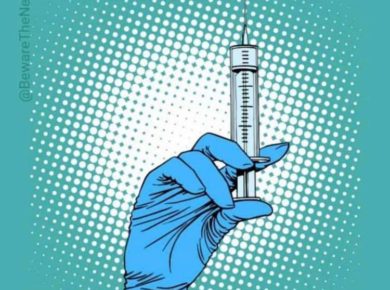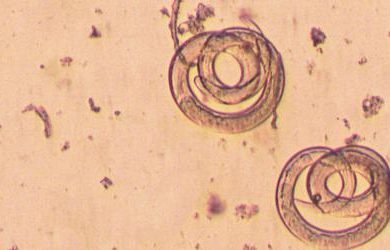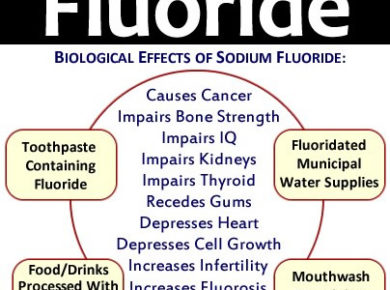Another post on aluminum and vaccines! Sorry, BUT I HAD TO! 😊
It is ironic to me that we live in an area where we can find so much information at the tip of our fingers, but people are so ignorant!
This applies to several topics, but the main one that I have seen over the years is about vaccinations.
It is SO easy to do some research and realizing that vaccines are harmful. Not hard at all! But so many are still ignorant of this fact.
And it is not too difficult to find and talk to parents who have and live with children injured by vaccinations.
I have written several times on adjuvants and specifically aluminum adjuvants. How bad they are. They are the main reasons for vaccine reactions.
People are so confused when it comes to this topic. They are several sources of aluminum like cookware, antiperspirants, some medications, and of course vaccines.
The main argument I hear all the time is that aluminum is a natural element, we find it in nature, so it is safe.
This is so ludicrous that I do not know where to start! 😊
One of the best reviews on the topic of aluminum can be found at this link:
The authors conclude their article with this:
“Aluminium has no known beneficial physiological action in the human body and some genetic polymorphisms predispose to a greater susceptibility to its adverse effects. Therefore, a strong case can be made for avoiding unnecessary exposure to environmental sources of aluminum salts, especially on the part of children, pregnant mothers, and women of childbearing age who may become pregnant. Such avoidance need not lead to hardship or inconvenience; aluminum cookware may be replaced by safer alternatives, while aluminum-containing antiperspirants, potentially implicated in the rise of cases of breast cancer particularly affecting the upper outer quadrant of the mammary gland, may be replaced by nonaluminium versions. The use of aluminum salts in medical products is a more contentious issue. While antacids are available which do not contain aluminum salts, the avoidance of immunizations which do not contain aluminum salts as adjuvants have wider political and financial implications. It would seem prudent to try to find an alternative to aluminum adjuvants as soon as possible and phase out their use.”
It still blows my mind that, today, the “Offit” sect is still believing that aluminum is perfectly fine to inject to babies. I use the term sect because it is a belief system. They do not want to be wrong, so they come up with all kind of illogical fallacies to make them believe they are right.
Bare with me, because this post is going to be long. I need to address a few things 😊
Lots of my colleagues already debunked these myths around aluminum several times in the past. Below I will state the most interesting articles. It will be a collection of several facts, science, and statements from people in the field that support the main point: aluminum is toxic and causes neurological issues like autism.
The first is an analysis of one of the most ridiculous claims we hear: injected aluminum from vaccines is eliminated in a few days.
The most rigorous arguments in defense of aluminum adjuvant are described by the Oxford Vaccine Group (OVG), at Oxford University: http://vk.ovg.ox.ac.uk/vaccine-ingredients#aluminium.
The OVG has two arguments for the safety of aluminum adjuvant:
“After vaccination, there is a temporary increase in the amount of aluminum in the body, but this is not a lasting effect. The body gets rid of most of the aluminum in just a few days. There is no evidence that this causes any risk to babies and children.”
Argument 2:
“Two studies from 2002 (Keith et al) and 2011 (Mitkus et al) compared the impact of aluminum from diet and vaccines in infants. Both of these found that the total amount of aluminum absorbed from both sources is significantly less than the recommended safe maximum amount.
Two papers will be used to debunk the first argument:
Flarend: “In vivo absorption of aluminum-containing vaccine adjuvants using 26Al”
Movsas: “Effect of Routine Vaccination on Aluminum and Essential Element Levels in Preterm Infants”
Argument 1 is contradicted by both Flarend and Movsas.
Flarend is an experiment in which radioactive (“radiolabeled”) aluminum adjuvant was injected into rabbits. Movsas is a study looking at urine and blood aluminum in human infants after the 2-month vaccination date (the 2-month vaccination date has the highest dose of aluminum in the CDC vaccine schedule, up to about 250 mcg/kg).
Flarend injected radiolabeled AlOH and AlPO4 into rabbits, and then monitored
the urinary excretion of the radioactive aluminum. The aluminum adjuvant dosage
was 340 mcg/kg, which is comparable to dosages received by human infants
according to the CDC schedule: 75, 150, and 250 mcg/Kg.
After 28 days, the rabbits were dissected and aluminum concentration was measured in body tissues. The radioactivity enabled very accurate measurements of aluminum content in the urine, blood, and tissues.
Flarend unequivocally determined that the aluminum was NOT eliminated in “just a few days”, as claimed by the Oxford Vaccine Group. Instead, Flarend found that most of the aluminum was retained in the rabbits even after 28 days. Flarend states:
“The cumulative amount of aluminum eliminated in the urine during the 28 days of the study was 6% of the Al hydroxide and 22% of the Al phosphate adjuvant dose. Aluminum from both adjuvants was still being excreted at a steady rate at day 28.”
Since injected Al adjuvant is not eliminated in the feces, about 94% and 78% of the AlOH and AlPO4, respectively, remained in the rabbits after 28 days. The aluminum was not eliminated in a few days, as claimed by the Oxford Vaccine Group.
Also, Flarend detected Al adjuvant in the brain, kidneys, spleen, liver, lymph nodes, and heart.
Yes, aluminum hydroxide is bio-accumulated in the body in several organs, quite the opposite of what the pro-vaxers claim. 😊
Let’s look at the the main results of Flarend.
For Al hydroxide, about 100-5.6% = 94.4% of the aluminum remained in the rabbits after 28 days.
For Al phosphate, about 100-22% = 78% remained in the rabbits after 28 days. The aluminum is definitely not gone “in just a few days” as claimed by the Oxford Vaccine Group.
Further, Flarend also reported that the aluminum persisted in the blood for weeks. Flarend states:
“The aluminum concentration in blood
produced by AH [Al hydroxide] adjuvant at 1 hour was similar to the
concentrations found from 2 to 28 days.”
The results are different for AlOH and AlPO4 because they dissolve in body fluids at different rates. Only dissolved aluminum appears in the blood.
AlPO4 dissolves faster and so is eliminated faster and produces a higher blood aluminum level; AlOH dissolves slower and so is eliminated slower and produces a lower blood aluminum level.
The Movsas study (2013) is consistent with Flarend. Movsas
measured aluminum concentration in urine and blood before and after
routine vaccination with 1200mcg aluminum in 2-month old infants. Movsas
states:
“No significant change in levels of
urinary or serum aluminum were seen after vaccination.”
The obvious question is “where did the aluminum go”? It was injected, but it didn’t show up in the blood or urine. It’s in the body somewhere, but we don’t know where.
Movsas states:
“We were reassured to find no significant postvaccine rise in serum aluminum level after vaccination of preterm infants with vaccines containing a total of 1200 μg of aluminum.“
The above statement is bizarre. We don’t know where the aluminum went, and that’s not reassuring at all. Some tissues like the brain are very sensitive to aluminum.
I believe this irrational interpretation is motivated by a desire (or psychological need) by medical professionals to believe they are helping, and not injuring, their patients.
From the Flarend study (and other studies of Al adjuvant) we know that some Al adjuvant is transported to the brain, which is very sensitive to aluminum.
The Flarend and Movsas results obviously contradict the “just a few days” claim by the Oxford Vaccine Group and other vaccine advocates.
The Flarend and Movsas results are not surprising in view of the present scientific understanding of aluminum adjuvants.
Today, it is known that Al adjuvant particles persist in the body for years. The Al adjuvant particles dissolve very slowly; they remain in the body as particles, not dissolved aluminum ions.
I have written about this phenomenon many times in the past, but let’s recap here.
The Al adjuvant is taken up by macrophages, which then transport it around the body and into the brain. Since macrophages are seldom present in the blood, it’s not surprising that the aluminum was not detected in the blood in the Movsas study. The transport of aluminum adjuvant into the brain is explained
Many vaccines contain an aluminum adjuvant, an ingredient necessary for stimulating a strong immune response and immunity. An aluminum adjuvant is typically made of Al hydroxide and/or Al phosphate nanoparticles.
The unique way that aluminum adjuvant nanoparticles (AANs) are transported around the body. The movement (“kinetics”) of injected AANs is very different from the movement of ingested aluminum.
Let’s cover another topic that is easy to debunk: ingested vs. injected aluminum.
I have covered this topic in a previous video, but let’s summarize the main points here.
Ingested
aluminum enters the blood from the gut. Al is absorbed in a water-soluble ionic
form, typically Al3+ or an aluminum complex. This aluminum comprises individual
Al atoms, like ordinary salt dissolved in water. Ionic aluminum is toxic, but
at normal, natural levels of exposure it does not cause harm, for a few
reasons:
1) absorption is low. Only about 0.3% enters the blood,
2) the blood-brain barrier (BBB) almost completely blocks Al3+ entry into the
brain,
3) Al3+ is rapidly removed from the blood by the kidneys.
These defenses protect the body and brain from natural levels of aluminum ingestion.
Ingested aluminum has low absorption (0.3%), is rapidly eliminated in the urine, and is (mostly) excluded from the brain by the blood–brain barrier (BBB). These natural defenses are adequate to protect the brain from normal, natural levels of Al ingestion.
Based on this understanding of ingested aluminum transport, it was long assumed that AANs are eliminated in the same way as ingested aluminum. AANs cannot be filtered by the kidneys (they are too large). But it was assumed that the AANs dissolve rapidly in body fluids, and the resulting Al3+ is eliminated in the urine, just like ingested aluminum. However, this simple model is wrong.
Vaccine promoters assume that Al adjuvant is safely eliminated by dissolution and urinary excretion. That‘s why vaccine promoters believe only the blood concentration of Al3+ is important. We now know this is wrong. The Al adjuvant dissolves very slowly and so can remain in the body for many months or years. Also, it‘s not just the dissolved Al3+ that‘s toxic; the Al adjuvant particles are also toxic.
You see, ingested aluminum does not cause much problem. The body has a defense mechanism to excrete it.
All those claims by pro-vaxers that aluminum from breast milk is the same as vaccines or that the amount in formulas are higher than in vaccines are just plain ridiculous. They use what we call a “red herring” fallacy, where they try to distract and confuse us from the real issue: injected aluminum is toxic!
By the age of 6 months, a typical American baby is injected with 3675 mcg of aluminum.
Compare this to breastmilk, for example. By the age of 6 months, a baby who is breastfed absorbed about 21 mcg of aluminum.
However, injected aluminum is quite a different story!
What actually happens is a type of immune cell called a macrophage (MF) ingests (called “phagocytosis”) the AANs. Eating foreign material is a primary function of MFs. When MFs detect bacteria or debris, the MFs eat it, and destroy it with enzymes.
The problem is that AANs are not digested by the MF enzymes. Consequently, the AANs remain inside the MFs for a long time. The AANs can persist for years. MFs that consume the AANs become highly contaminated with aluminum and spread the aluminum wherever they go. And they go everywhere in the body.
The MFs travel across the blood-brain barrier (BBB) when there is inflammation in the brain. The MFs, once loaded with AANs, act as a Trojan Horse and carry the AANs into the brain. This is harmful because the brain is very sensitive to aluminum.
Before the Al adjuvant nanoparticles dissolve, they are eaten (“phagocytosed”) by MFs. The MFs then carry the Al nanoparticles around the body, including into the brain. MFs can pass through the BBB when inflammation is present.
Aluminum at very low levels causes inflammation in the brain. Aluminum stimulates elevated production of the cytokine interleukin-6 (IL-6). Elevated IL-6 causes autism.
Once inside the brain, the aluminum causes inflammation which attracts more MFs, some of which are loaded with still more aluminum. The result is a vicious cycle of inflammation and aluminum accumulation in the brain.
The brain is extremely sensitive to aluminum. Concentrations of aluminum as low as 10-100 nano-molar can cause inflammation of brain tissue. 10 nano-molar is 270 nano-grams aluminum per liter. (nano = 1 billionth).
That’s an amazingly low concentration. 10 nano-molar Al causes inflammation in human blood vessel cells.
You can read these e papers on this topic:
“Nanomolar aluminum induces expression of the inflammatory systemic biomarker C-reactive protein” by Alexandrov et al.
“Nanomolar aluminum induces pro-inflammatory and pro-apoptotic gene expression in human brain cells in primary culture” by Lukiw et al.
A typical 1-year old infant has a brain weight of about 1000 grams. A 10 nano-molar concentration in 1000 grams contains 270 nano-grams (0.27 micrograms) of aluminum; a 100 nanomolar concentration in 1000 grams contains 2700 nano-grams (2.7 micrograms).
This is extraordinary, because a single vaccine can contain 250 micrograms (250,000 nano-grams), and an infant can receive about 3,675 micrograms in the first 6 months.
In other words, less than 0.01% of the aluminum in the first 6 months of vaccines can create a 10-nanomolar concentration in the brain, and 0.1% can create a 100-nanomolar concentration in the brain (since 3,675 x 0.01% = 0.3675 micrograms, and 3,675 x 0.1% = 3.675 micrograms)
In other words, a single vaccine contains more than enough aluminum to inflame the brain! This is very frightening!
Of course, this assumes uniform distribution of the aluminum in the brain, which is not the reality. Al concentration in the brain is highly nonuniform. However, the above calculation establishes plausibility.
But, the amount of aluminum in vaccines greatly exceeds the amount necessary to cause brain inflammation.
The scientific evidence for this “Trojan Horse” mechanism is unequivocal and overwhelming. Every step has been proven by multiple studies from well-known universities and government-funded laboratories:
-the ingestion of AANs by MFs,
– the movement of MFs into the brain,
– and the observation that MFs carry nanoparticles into the brain.
Also, the entire process has been demonstrated. AANs injected into experimental animals have been detected and imaged in the brain. The ability of MFs to transport particles into the brain has even been used to deliver therapeutic drugs (formulated as particles) into the brain. The Trojan Horse mechanism is well established and recognized. It is not theoretical.
It is what is causing inflammation in the brain leading to ASD.
But one of the major concern of aluminum adjuvant is that they are made of nanoparticles!
Nanoparticles are typically defined as having at least one dimension of less
than 100nm (0.1 microns). Vaccine promoters have argued that aluminum adjuvant
particles are much larger, in the range of about 2-15 microns, and they cite
optical size measurements as proof.
The optical measurements are misleading because they measure the size of particle agglomerates, which are loose, weakly-bound clumps of nanoparticles.
All nanoparticles agglomerate to form larger particles. Agglomerated nanoparticles are still considered nanoparticles in the scientific literature.
Agglomerates are defined as being held together by weak electrostatic forces, not chemical bonds, and that is the case with an aluminum adjuvant. For example, nanoparticle agglomerates (including Al adjuvant) can be dispersed by gentle methods such as ultrasound.
This paper “Measuring the Surface Area of Aluminum Hydroxide Adjuvant” by Johnston 2002 determined the primary particle size, which is of 4.5 x 2.2 x 10 nm from X-ray diffraction and water sorption measurements.
They authors state:
“The X-ray diffraction pattern and the Scherrer equation were used to calculate the dimensions of the primary crystallites. The average calculated dimensions were 4.5 x 2.2 x 10 nm.“
Several studies show that MFs eat (“phagocytose”) the AANs in vaccines.
This is one of many: Unequivocal identification of intracellular aluminum adjuvant in a monocytic THP-1 cell line by Mold et al.
This study exposed a culture of “THP-1 monocytes” to Al adjuvant (aluminum hydroxide). Monocytes typically mature into macrophages, and, like macrophages, they eat debris such as nanoparticles. THP-1 cells are cancerous (which makes them easy to grow and maintain in culture).
Another paper supports this point as well: Aluminum hydroxide adjuvant induces macrophage differentiation towards a specialized antigen-presenting cell type by Rimaniol et al.
This paper reports that human macrophages become “loaded” with aluminum when exposed to AlOH adjuvant. The macrophages used in this experiment were isolated from fresh human blood samples taken from healthy subjects.
From this article:
“Following the injection of
AlOOH-containing vaccine in vivo, muscle infiltrated macrophages bear crystalline inclusions
of aluminum hydroxide. We
assessed the presence of such inclusions in AlOOH-treated macrophages in
vitro. By
electron microscopy, we observed numerous, large crystalline inclusions in
macrophages treated for 2 days with AlOOH (Fig. 2B and C), very similar to
those observed in vivo. These crystalline inclusions were still observed in
macrophages 7 days after the removal of AlOOH (Fig. 2D).”
Another proof of this concept is this article: “Crucial role for the Nalp3 inflammasome in the immunostimulatory properties of aluminum adjuvants by Eisenbarth et al.
This paper describes research on the inflammatory signals induced by Al adjuvants. It reported that macrophages eat the Al adjuvant. The paper used the generic term “endocytosis”, which refers to the intake of substances by a cell. Phagocytosis is a specific type of endocytosis.
“Aluminium particles of various aluminium
adjuvants form insoluble particles that can aggregate, are readily phagocytosed by macrophages and have been shown to stimulate
IL-1β and IL-18 production in vitro “
and
“...these data support a model of active endocytosis of alum by viable macrophages…”
This next paper looks at this phenomenon in vivo: “Macrophagic myofasciitis lesions assess long-term persistence of vaccine-derived aluminum hydroxide in muscle” by Gherardi et al.
A study of macrophagic myofasciitis (MMF) patients observed AANs inside MFs at the location of intramuscular vaccine injections. Muscle tissue samples were obtained by biopsy 3 months to 8 years after vaccine injection (average: 36 months). Presence of aluminum inside MFs was confirmed by 3 different methods. Aluminum was present in MFs only, and not in muscle fibers.
Inflammation Causes Macrophage Movement
A 2009 study (D’Mello et al.) demonstrated that liver inflammation caused MFs
to enter the brain and central nervous system (CNS). In this experiment, the
liver inflammation was induced by blocking a bile duct. The liver inflammation
caused microglia (immune cells of the brain) in the CNS to become activated.
The activated microglia released MCP-1, which attracted macrophages into the brain. When MCP-1 is produced by microglia, macrophages from around the body travel into the brain.
“MCP” stands for “macrophage chemoattractant protein”, which of course describes its primary function of summoning macrophages. MCP-1 is also known as CCL2.
A key finding of the D’Mello study is that inflammation outside the CNS caused MFs to enter the CNS. D’Mello found that inflammation in the liver caused macrophages to travel into the brain.
The MFs travel to the brain even if the original source of the inflammation is not in the brain!
This fact suggests that a MFs may travel into the CNS in response to inflammation anywhere in the body. The inflammation must be the correct type, however (i.e., it must stimulate MCP-1).
An impressive study by Khan et al. (Slow CCL2-dependent translocation of biopersistent particles from muscle to brain) shows that AANs and other nanoparticles (e.g. latex particles) injected intramuscularly (into the leg) travel into the brain. AANs were detected in the brain and spleen, up to one year after injection. These results contradict the long-assumed “100% of adjuvant dissolves into the blood” and “aluminum adjuvant remains harmlessly at the injection site” myths believed by vaccine promoters.
Below is a page from the Khan paper showing that AANs traveled into the brain and spleen.
Khan
observed that transport of AANs depends on MCP-1, which indicates that the
macrophages are responsible for transporting the nanoparticles.
The Khan et al. paper concludes with this statement:
“…alum has high neurotoxic potential [49], and planning administration of continuously escalating doses of this poorly biodegradable adjuvant in the population should be carefully evaluated by regulatory agencies since the compound may be insidiously unsafe. It is likely that good tolerance to alum may be challenged by a variety of factors including overimmunization, BBB immaturity, individual susceptibility factors, and aging that may be associated with both subtle BBB alterations and a progressive increase of CCL2 production [50].” (BBB: Blood-Brain Barrier)
An important new study (Crepeaux et al, 2017) reported that a dosage of 200mcg/Kg Al adjuvant (as 3 doses of 66 mcg/Kg), injected intramuscularly in the leg, caused a 50X increase in brain aluminum content. Brain aluminum was measured 6 months after the final injection.
Of course, this result suggests that the Al adjuvant persists in the brain long-term. For the 200mcg/kg dosage, about 1.3% of the injected aluminum wound up in the brain.
The Al adjuvant injection also caused long term microglial activation (inflammation) in the brain.
MCP-1 production is stimulated by some types of immune activation. Hence, a
vaccine that stimulates MCP-1 may cause AANs (e.g. from prior vaccines) to move
into the brain. Some infections or toxins induce MCP-1. Interestingly, Al
adjuvant induces MCP-1, suggesting that it may stimulate its own transport.
MCP-1 is elevated in the autistic brain and spinal fluid. This was one of the most significant findings of the 2005 Vargas study, the first to report chronic brain inflammation in autism. Note that Vargas mentions that MCP-1 causes movement of macrophages/monocytes into the brain.
Vargas states:
“The presence of MCP-1 is of particular interest because it facilitates the infiltration and accumulation of monocytes and macrophages in inflammatory central nervous system disease.”
AND
“MCP-1, a chemokine involved
in innate immune reactions and important mediator for monocyte and T-cell
activation and trafficking into areas of tissue injury, appeared to be one of the most
relevant proteins found in
cytokine protein array studies because it was significantly elevated in both
brain tissues and cerebrospinal fluid.”
AND
“The increased expression of
MCP-1 has relevance to the pathogenesis of autism because we believe its
elevation in the brain is linked to microglial activation and perhaps to the
recruitment of monocytes/macrophages to areas of neurodegeneration…”
From the paper “Delivery of nanoparticles to brain metastases of breast cancer using a cellular Trojan Horse” by Choi et al:
“More than two decades ago, Fidler and colleagues provided evidence that macrophages of blood monocyte origin can infiltrate experimental brain metastases while the blood–brain barrier is intact (Schackert et al. 1988).”
And
“The use of monocyte/macrophages as delivery vehicles to the central nervous system has been investigated in situations other than malignancy. Afergan et al. demonstrated the delivery of serotonin to the brain by monocytes, which had phagocytosed nano-liposomes containing this otherwise brain impermeant drug (Afergan et al. 2008). Dou and colleagues utilized bone marrow–derived macrophages as carriers of and depots for antiretroviral drugs to treat and attenuate the symptoms of HIV-associated neurocognitive disorder (Dou et al. 2009). Therefore, we hypothesized that nanoparticle-laden monocytes/macrophages would home into intracranial metastatic deposits by crossing the blood–brain barrier following injection into the systemic circulation.”
In order, macrophages can and do transport nanoparticles into the brain by bypassing the BBB.
Every step has been proven: MFs eat Al adjuvant nanoparticles, MFs cross the BBB and MFs transport nanoparticles into the brain. All these steps have been experimentally demonstrated multiple times. And the entire process has been demonstrated with AANs in mice. AANs from an intramuscular injection were “photographed” in the brain by PIXE. Additionally, vaccine-relevant dosages of Al adjuvant increased brain Al content by 50X. These facts contradict the simplistic and wrong belief (preferred by vaccine promoters) that AAN toxicity is determined by the concentration of dissolved aluminum ions in the blood. The story is far more complicated and worrisome than that. The toxicity of aluminum adjuvant depends on the transport of Al adjuvant nanoparticles by macrophages.
Since aluminum is a potent neurotoxin and strongly stimulates brain-injuring inflammation, transport of Al adjuvant into the brain is a serious concern for vaccine safety. After all, Al adjuvant is specifically designed to stimulate inflammation. Inflammation is what makes it effective as an adjuvant. Brain inflammation causes autism.
This study “Highly delayed systemic translocation of aluminum-based adjuvant in CD1 mice following intramuscular injections” by Crepeaux et al is very interesting.
A key finding from this study is the extreme biopersistence of Al adjuvant particles. The particles were observed in distant organs and tissues up to 270 days after injection, including in the brain, spleen, and lymph nodes.
This is confirmation of prior experiments that also found high persistence. Al adjuvant nanoparticles dissolve very slowly and travel extensively around the body.
The authors state:
“The present study confirms that alum is extremely biopersistent and that alum biopersistence can be observed in both the injected muscle and distant organs, including dLNs (draining lymph nodes) and spleen. Regarding the strong immunostimulatory effects of alum and the unrequired depot formation for its adjuvant activity, long-term biopersistence of alum in lymphoid organs is clearly undesirable, and may cast doubts on the exact level of long-term safety of alum-adjuvanted vaccines.”
God bless y’all 🙂
Dr. Serge






What about mercury? It I’d a common ingredient in the flu vaccine. THAT is why if a dose is broken the entire building must be evacuated and a hazmat team is ushered in to uncomtaminate the building.